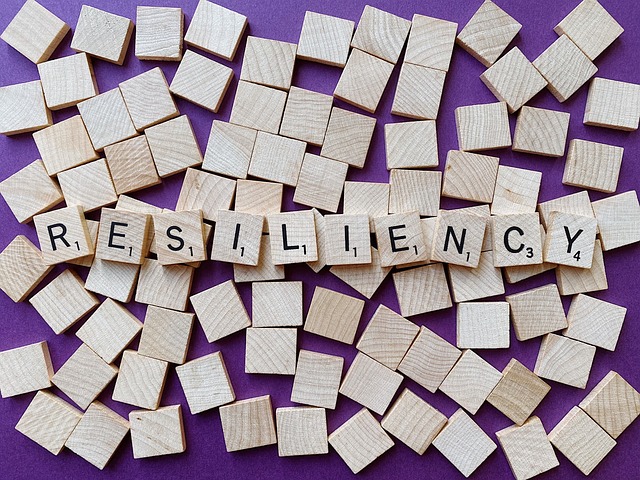Introduction
Fear can be a significant barrier in our lives, especially when it comes to taking risks. The fear of risks often stems from uncertainty or the unknown. It can prevent us from pursuing our dreams or taking the necessary steps toward achieving our goals. In today’s fast-paced world, a success mindset is crucial for personal growth. So, how can we effectively overcome this fear? Let’s explore various strategies and insights that can help shift our perspectives and encourage action despite the anxieties we might face.
Understanding the Fear of Risks
The fear of risks is inherent in many aspects of human existence. Evolutionarily speaking, our ancestors developed this fear as a survival mechanism. They had to assess their surroundings and gauge potential dangers. Today, however, while we still have a right to be cautious, many risks we face aren’t life-threatening—they’re simply uncomfortable or uncertain. Acknowledging your fear is the first step toward defeating it. When you recognize that it’s a natural reaction, you can start to assess the situation logically. Ask yourself, “What specifically am I afraid of?” Detaching your emotions from the risk can provide clarity. Fear tends to magnify the unknown, often causing individuals to overestimate the dangers and underestimate their capabilities. As you reflect on these emotions, remember that not all risks lead to negative outcomes. In fact, many can lead to extraordinary successes.
Identifying the Risks You Want to Conquer
Risk comes in many forms—be it personal, financial, or professional. It’s essential to pinpoint the specific risks you want to confront. Create a list of these risks and categorize them based on their potential rewards. For example, consider risks related to your career, such as applying for a position you think you’re not qualified for, or risks in your personal life, like pursuing a new hobby or traveling alone. Understanding the potential positive outcomes and weighing them against the fears can give you a clearer vision. When you articulate your fears, they lose some of their power over you. Moreover, identifying what you truly want helps tie your actions to a greater purpose. This alignment will serve as motivation as you prepare to confront those risks.
Developing a Success Mindset
A success mindset is crucial when overcoming the fear of risks. This mindset fuels resilience and positivity, encouraging you to take action despite uncertainties. It starts with cultivating self-belief. Challenge negative self-talk by replacing it with affirmations. Instead of thinking, “I will fail,” you might say, “I am capable of handling whatever comes my way.” Visualization is another powerful tool. Picture yourself succeeding in that risky endeavor. Visualizing success reinforces your determination and clarity, making the risk appear less daunting. Additionally, setting realistic goals will help structure your approach. Break down larger aspirations into smaller, manageable tasks. Each small victory will build your confidence, reinforcing the belief that you can face bigger challenges ahead. Embracing a growth mindset, where you see failures as learning experiences, rather than setbacks, is key to developing resilience.
Taking Action, One Step at a Time
Taking action is the most vital part of overcoming fear. Start with small, calculated risks. This gradual exposure builds confidence while minimizing the threat level. Instead of jumping into a colossal risk, test the waters with a smaller commitment. For example, if you want to start a side business, begin by discussing your ideas with others. Gain feedback and refine your concept without making a significant investment yet. As you take these gradual steps, pay attention to how you feel. Celebrate your successes, no matter how minor they may seem. Positive reinforcement matters. If you encounter obstacles, approach them with curiosity instead of dread. Analyze what didn’t work and adapt your strategy. This iterative process allows you to learn while alleviating the pressure often associated with risks. As time passes, what once appeared risky may become second nature.
Embracing Failure as a Learning Opportunity
Failure often has a negative connotation, but it’s essential to embrace it as a stepping stone. Many successful individuals have faced setbacks on their journeys. They often say that failure presents the best lessons. When you take risks, you may not always achieve the desired outcome. However, within each failure lies an opportunity to learn. Reflect on what went wrong and what you can adjust for next time. By re-framing failure as a valuable experience, you reduce its fear factor. You’ll begin to anticipate growth rather than dread. This shift cultivates resilience and encourages continual risk-taking in the pursuit of your goals. Remember, risk-taking isn’t about avoiding failure; it’s about learning, adapting, and improving. Emphasizing this perspective nurtures a mindset ready for challenges and different possibilities.
Creating a Supportive Environment
Surrounding yourself with a supportive network is crucial in overcoming your fear of risks. Often, the people we associate with influence our attitudes and behaviors. Seek out friends, mentors, or communities that embody the success mindset. They can provide encouragement and constructive feedback. Approach individuals who have successfully taken similar risks. Their insights and support can reassure you as you embark on your own journey. Share your aspirations with them, and discuss your fears candidly. You’ll find that you aren’t alone in grappling with these feelings. Vulnerability often strengthens connection, and together, you can face and navigate risks. Consider joining a group focused on personal development. The camaraderie can elevate your courage and help institutionalize a mindset that encourages taking action, shared experiences, and growth.
Practicing Mindfulness and Stress Reduction Techniques
Mindfulness and other stress reduction methods can be immensely helpful in conquering the fear of risks. When anxiety begins to creep in, these techniques can provide a calming effect and create a sense of groundedness. Start by incorporating meditation or breathing exercises into your daily routine. Focus on your breath and concentrate on letting go of tension and fears. This mindfulness practice helps you stay present. This presence helps you assess risks more rationally rather than emotionally. Journaling can also be beneficial; it allows you to express your thoughts and feelings surrounding your fears. By writing about your worries, you may discover patterns or triggers that contribute to your anxiety. Once identified, these can be addressed more effectively. Establishing these practices helps create a stable foundation that enables you to face risks with a clearer, calmer mindset.
Utilizing Visualization Techniques
Visualization is a powerful tool in overcoming fear. When you visualize success, you essentially create a mental blueprint of what you want to achieve. Construct vivid scenarios where you picture yourself taking that leap and succeeding. Envision the feelings you’ll experience—joy, relief, and pride. This positive reinforcement can help dismantle the fear surrounding the action. You are not just imagining the success; you’re internalizing the process and visualizing yourself throughout. Regularly practicing this exercise strengthens your belief in the possibility of achievement. It transforms risks into manageable actions that you feel equipped to handle. This preparation can significantly reduce anxiety, causing you to approach risks with excitement rather than trepidation.
Real-Life Examples of Risk-Taking Successes
Examining stories of others can inspire us to take action despite fear. Consider entrepreneurs like Richard Branson. He faced numerous risks while building the Virgin Group, from launching an airline to venturing into space tourism. Each time, he focused on the potential benefits, learning from failures to propel him forward. Another example is JK Rowling, who faced numerous rejections before her Harry Potter series became one of the most beloved book franchises globally. Their stories remind us of the transformative power of risk-taking. When we witness others succeed despite fear, it encourages us to step out of our comfort zones.
Making Risk-Taking a Habit
Overcoming the fear of risks requires practice and intentionality. Start integrating small risks into your daily life. For instance, try a new recipe, take a different route to work, or introduce yourself to someone new. Make these small challenges a regular part of your routine. The more you confront minor risks, the more desensitized to fear you’ll become. Over time, this habit formation emboldens you to tackle larger challenges. Remember to process your feelings after each risk. Reflecting on successfully navigating risks reinforces your abilities, solidifying that you are capable of handling uncertainty. This slow, deliberate approach builds a reservoir of confidence that can be drawn upon when faced with more significant challenges.
Conclusion
In cultivating the ability to take risks, you empower yourself to pursue your passions fully. Recognizing that fear is a natural part of stepping outside your comfort zone can shift your perspective. As you embrace the journey of risk-taking, you’ll discover not just moments of success but also invaluable lessons in resilience and personal growth. Remember, every small step counts. Celebrate your courage, and soon you’ll find that what once felt overwhelming becomes a path to achieving your incredible dreams.
FAQ
1. Why do people fear taking risks?
People often fear taking risks due to uncertainty and the possibility of failure. This fear can be rooted in various factors, such as past experiences, societal expectations, or lack of confidence in one’s abilities.
2. How can I start taking risks in my personal life?
Begin by identifying small, manageable risks related to your personal interests. This could include trying a new hobby, speaking to new people, or changing your daily routine. Gradually expose yourself to slightly larger risks to build confidence.
3. What is a success mindset?
A success mindset is an optimistic framework that focuses on growth, resilience, and positivity. Individuals with this mindset view challenges as opportunities for learning rather than threats, empowering them to take action toward their goals.
4. How can mindfulness help with the fear of taking risks?
Mindfulness helps reduce anxiety by allowing individuals to focus on the present moment. Practicing mindfulness can calm racing thoughts and create space for rational decision-making when faced with uncertainty.
5. Can I embrace failure when taking risks?
Absolutely! Embracing failure as a learning opportunity is vital in risk-taking. Reviewing setbacks offers valuable insights, shaping your future decisions, and ultimately contributing to your growth.



